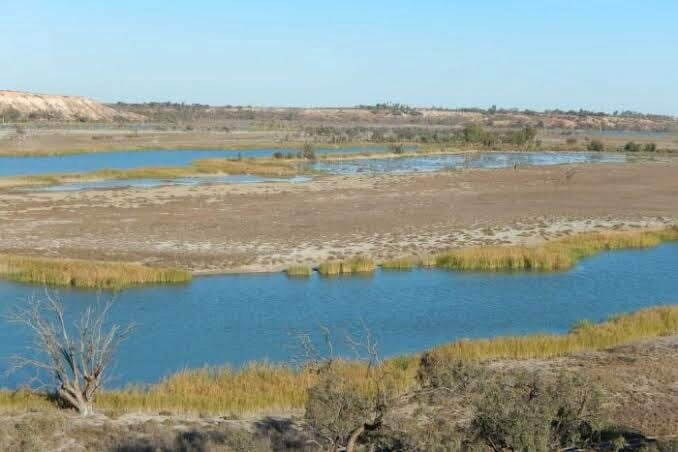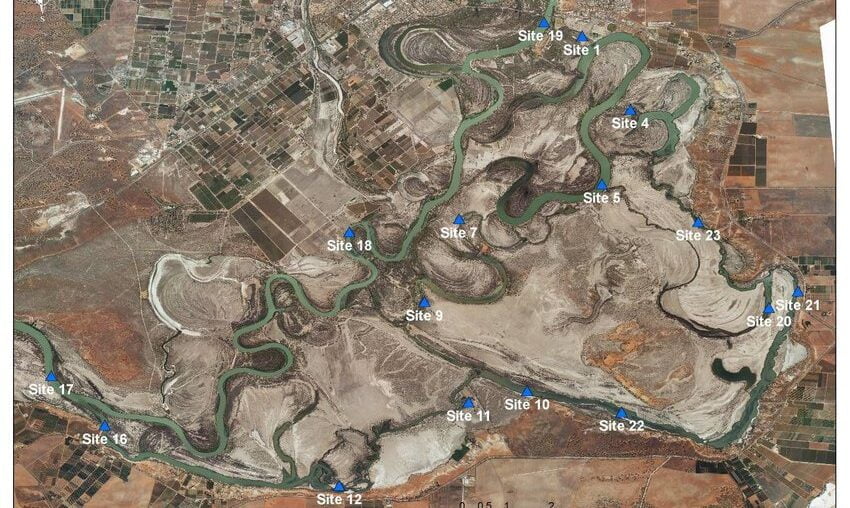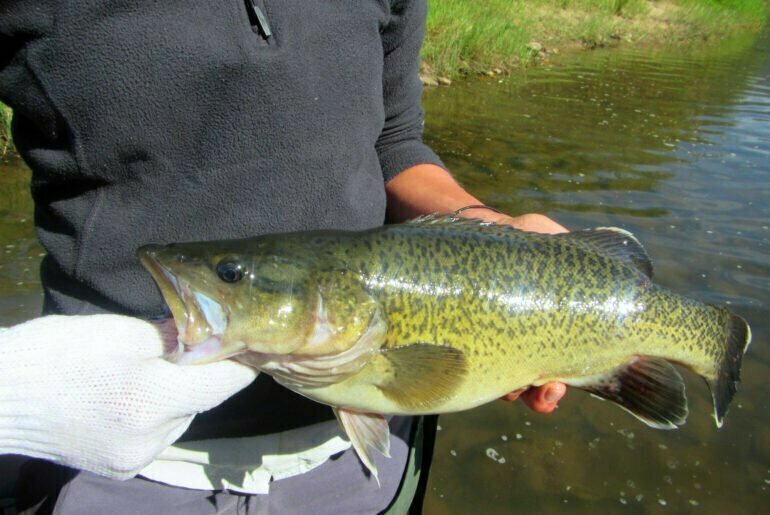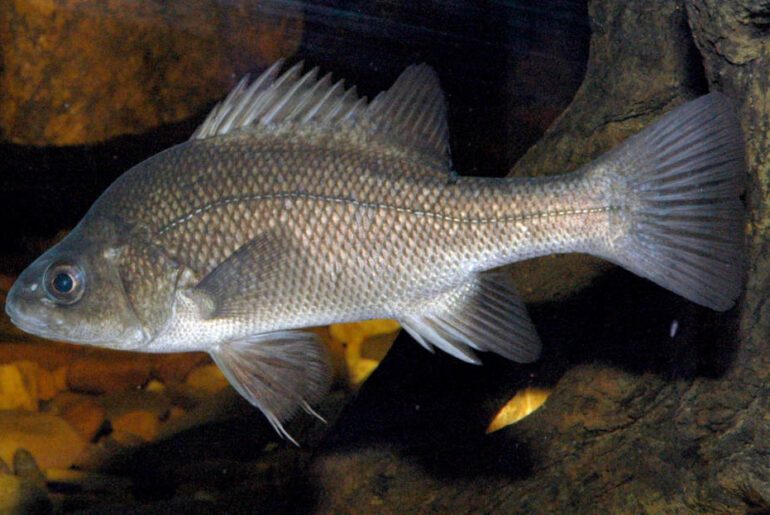The Pike floodplain and anabranch, located near the town of Paringa, is the second largest floodplain complex on the lower River Murray in South Australia, spanning ~6700 hectares. The floodplain comprises a range of vegetation types and habitats including River red gum and Black box woodlands, lignum shrublands, chenopod shrublands, herblands and dunes. The anabranch system bypasses Lock and Weir 5, creating a head difference between inlet and outlet creeks, a unique hydraulic condition within the anabranch. Consequently, the site is characterised by a diverse mosaic of aquatic habitats including permanent fast and slow flowing anabranches, as well as permanent and temporary wetlands. Although the Pike floodplain could be considered degraded at present, it still retains significant ecological character and attributes, including a diversity of terrestrial and aquatic habitats, and populations of rare, endangered and nationally threatened species.

Fish species in the anabranch complex
A total of 16 fish species have been sampled from the Pike anabranch complex, comprising 11 native and five non-native. This assemblage represents a range of life histories, sizes and conservation/economic importance from the small-bodied generalist Carp gudgeon to the large populations within the Pike anabranch have been impacted by habitat fragmentation and flow alteration within the system. Several barriers to fish movement are present, while the original inlet structures were crude, with little capacity to vary flow volumes.
In 2009, SARDI fish ecologists conducted the first assessment of fish and aquatic habitats within the Pike anabranch complex, concluding that while the riparian habitat was generally in poor condition, the instream habitat was deemed to be relatively good. It was considered that the Pike anabranch system provided a good template for habitat restoration to facilitate instream connectivity and enhance permanent flowing habitats.
Restoring connectivity
The Pike ecological restoration project has been improving the condition of the anabranch and associated floodplain. Actions have involved removing barriers to fish and flow at Banks B1, B3, C, H, Snake Creek Stock Crossing and Coombs Bridge. Further barrier removal is scheduled once the new Tanyaca Creek environmental regulator and fishway is constructed and commissioned (Banks D, E, F, F1 and G will be removed).
In 2014, a new regulator and vertical slot fishway was installed at Deep Creek (one of two primary inlet creeks), making it possible for small-, medium- and large-bodied fish (25-800 millimetres) to migrate from the Pike anabranch complex to the river upstream of Lock 5, under non-flood conditions, for the first time since the 1930s. Further, the flow capacity into the anabranch complex has been substantially increased from 150 to 800 megalitres/day as a result of this new structure. This increased capacity to vary flow brings with it the opportunity to not only protect the existing fast flowing habitat within the anabranch complex, but to also extend it. Fast flowing habitat is under -represented within the Lower Murray, so any action to increase the extent of this is considered to be particularly important for large-bodied native fish, like Murray cod and Silver perch, which prefer these hydraulically complex habitats.
In 2015, new fish friendly regulators were also installed on inlet creeks downstream of Lock 5; at Bank B, Bank B2 and Bank C regulators. These inlets activate under higher flows to South Australia (.40 gigaliters/day). Before the upgrade, under a flow to South Australia of 50 gigalitres/day, approximately 100 megaliters/day flowed from the river into the Pike anabranch complex via Banks B, B2 and C. After the upgrade, under the same flow to South Australia scenario, approximately 3000 megalitres/day will enter the Pike anabranch complex via these creeks. The substantial flow increase and improved connectivity between the river and anabranch complex is expected to benefit a range of instream biota including native fish.
Restoring fish passage in 2016
In 2016, Margaret Dowling Creek inlet structure was scheduled for replacement (the second primary inlet creek to the system). The current structure provides no fish passage, cannot be easily operated and significantly restricts flow. The new structure will include a regulator which takes advantage of the full cross-section of the creek, and will improve the capacity to introduce ecologically appropriate water regimes and incorporate a vertical slot fishway. The new structure will increase flow capacity from 150 up to 600 megaliters/day, with the flow-on effects expected to be significant to a range of flow dependant biota including the nationally-listed Murray cod.
Recently SARDI fish ecologists tested the performance of the new Deep Creek fishway using entrance and exit trapping. The trapping confirmed the functionality of the fishway, as well as providing an opportunity to optimise the gate configurations to improve attractant flows. Eight fish species and more than 20,000 individuals were recorded using the fishway over four weeks of sampling. The fishway designers and ecologists were thrilled with the performance of the Deep Creek fishway, with individuals as small as 29 millimetres able to successfully ascend the structure.
A third and final year of a concurrent fish assemblage and habitat monitoring project was also conducted by SARDI fish ecologists in April 2016. Whilst the data is yet to be fully interrogated and interpreted, it is exciting that juvenile Murray cod were sampled for the second consecutive year within the Pike anabranch complex. Other large bodied native fish species detected include the state-listed Freshwater catfish, Silver perch and Golden perch. It is hypothesised that post instream infrastructure upgrades, fish populations within the Pike anabranch will improve. If you’re a fish in the pike anabranch complex your future is certainly looking up!




